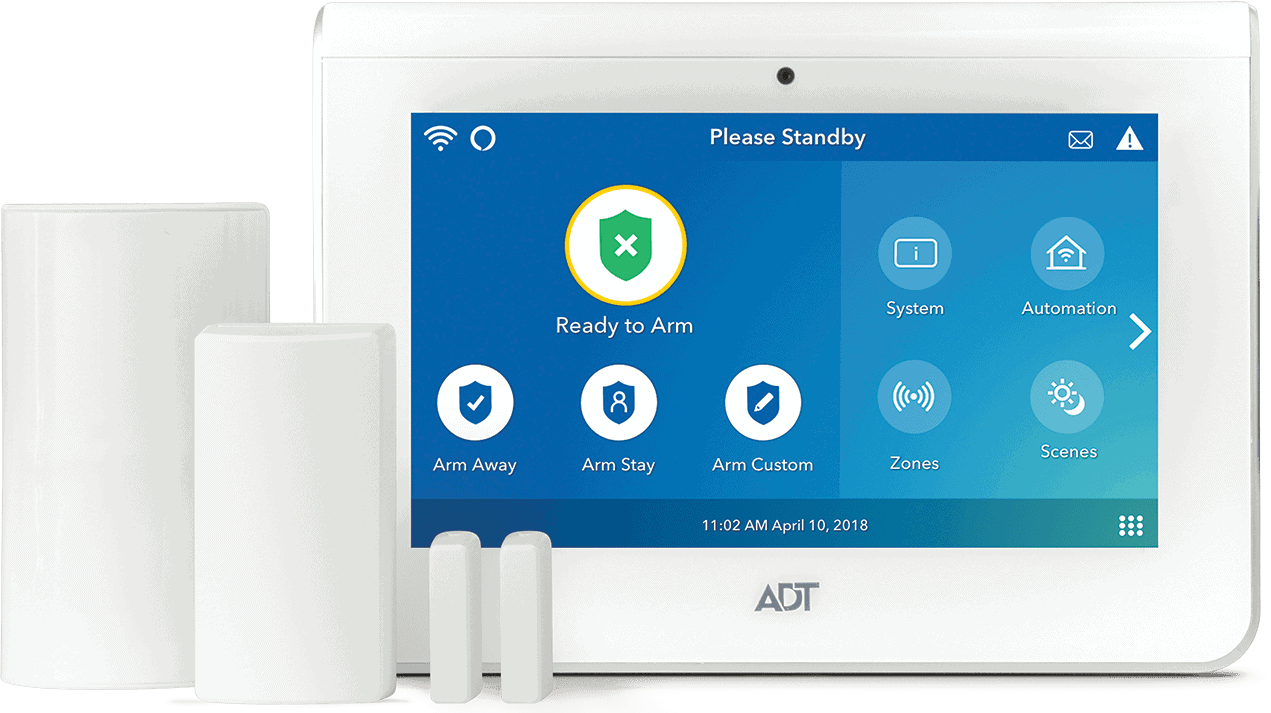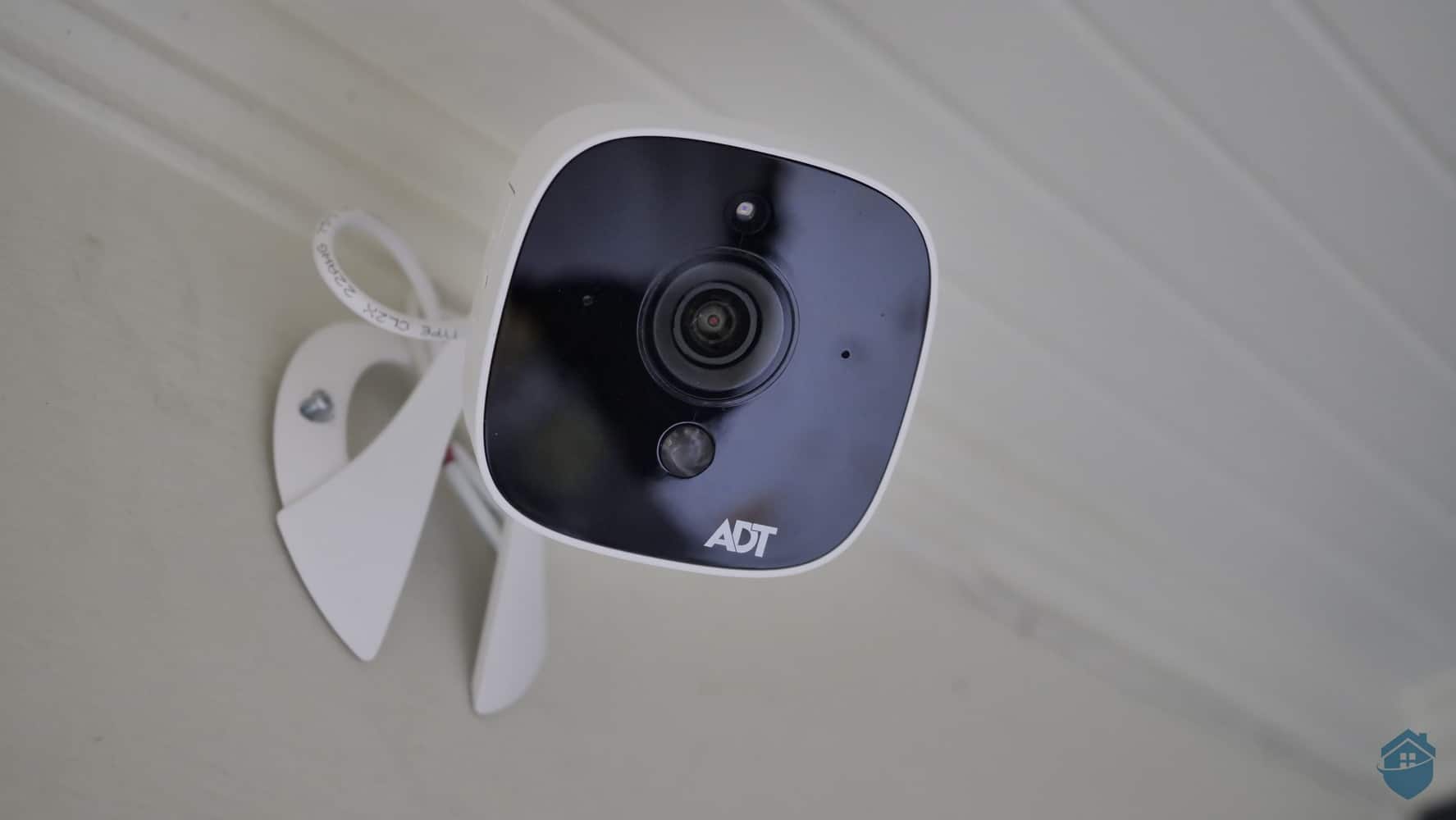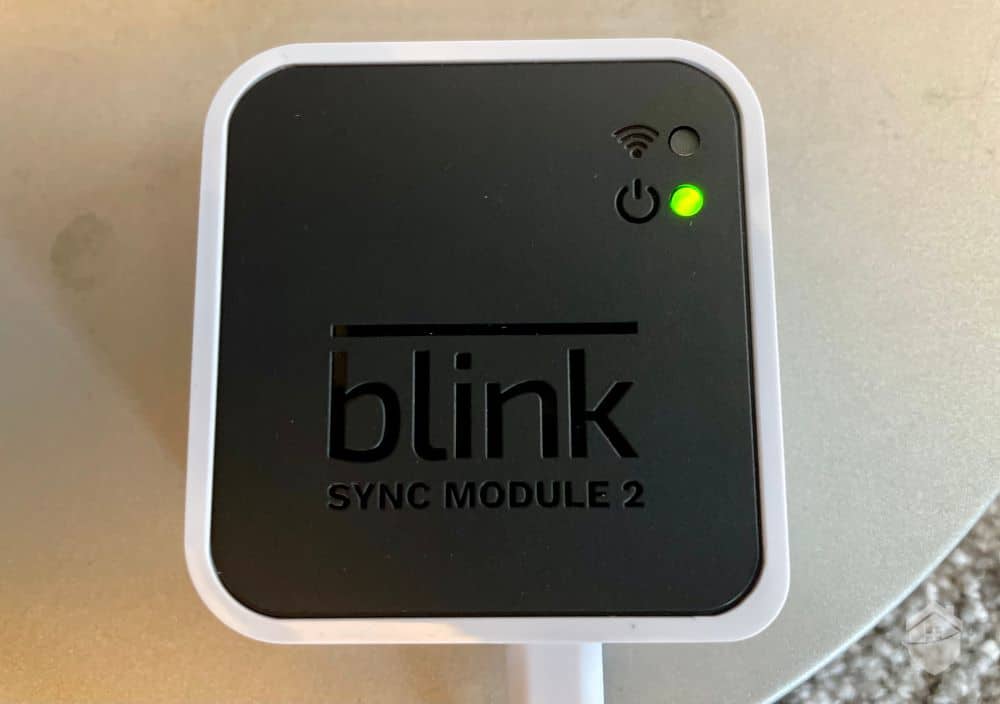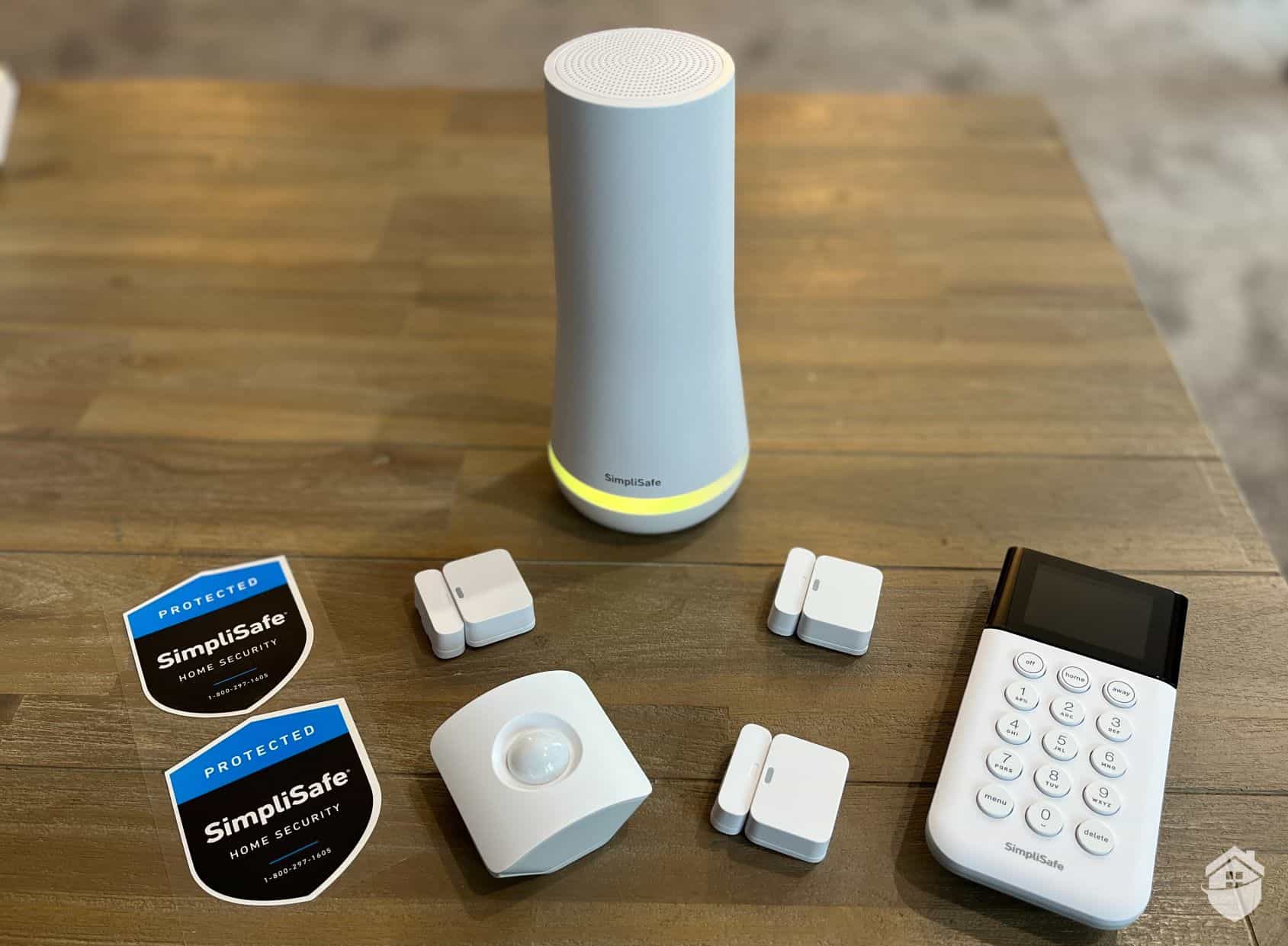ADT has taken over as an industry leader in home security with its reliable services. But their service is a little pricey, and nowadays you can find DIY setups that are both more affordable and easy-to-install. But can a DIY system truly stand up to the industry titan that is ADT? We’ve decided to evaluate one of the top dogs in home security within the ever-growing popular trend of DIY home security systems.
In this comparison, we’ll be taking a closer look at ADT and DIY home security systems to see if one prevails over the other. We’ll check out some of the similarities, differences, and features that both have to offer.
FYI: To learn all about our hands-on experience with ADT, head on over to our in-depth ADT review. We share the ins and outs of living with the system.
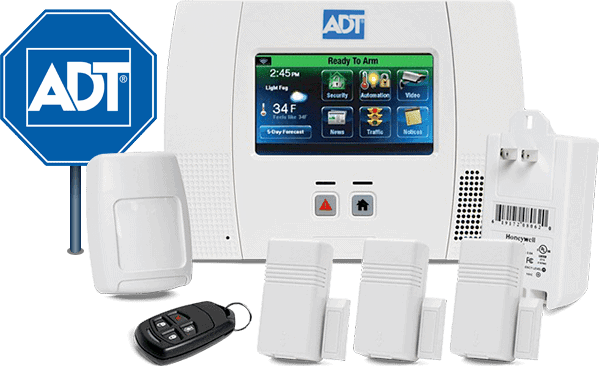
ADT Home Security Equipment
Similarities Between ADT and DIY Systems
Though there are some stark differences between ADT and your typical DIY systems on the market today, there are also quite a few similarities worth noting.
For starters, each offers options galore, with ADT including a wide variety of features in their packages. However, you may be surprised to learn that DIY systems also have the flexibility to include a variety of popular upgrades and technologies, from environmental sensors to home automation devices. These do-it-yourself setups can also be installed in such a way that allows you to integrate equipment from several different providers.
Another prominent similarity shared between ADT and most DIY systems is access to state-of-the-art, high quality equipment. When shopping around for your home security setup, the equipment’s quality is of paramount importance because it could (literally and figuratively) make or break your system. The last thing you want is to invest your time and money into something that gives out within the first year or fails to capture clear surveillance footage when you need it the most. Fortunately, ADT provides top-of-the-line equipment, while a majority of DIY systems allow you to pick and choose the equipment of your choice.
Did You Know? You can also find money-back guarantees with most companies that provide DIY equipment. In other words, whether you choose ADT or a DIY security system, you’ll still be able to fall back on a money-back guarantee if you’re unhappy with the equipment and wish to return it. Most of the time, you'll find these money-back guarantees in a company's refund or cancellation policy.
Last but not least, you’ll also be able to choose between landline and cellular connectivity with both ADT and some DIY systems. Landline connectivity and hardwired systems tend to be more reliable overall and rarely have connectivity problems, whereas wireless networks are more likely to cut out or lose connection. However, wireless equipment and the remote access/flexibility that comes with it are still popular features among homeowners.
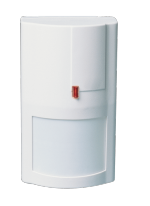
ADT Motion Sensor
Key Differences
So, how does ADT stand apart from your typical do-it-yourself setups? One big difference is in installation. Note that ADT equipment must be professionally installed, while DIY systems can be set up by the user within 30-45 minutes on average.
FYI: With ADT, you'll have 24/7 professional monitoring services at your disposal. That is, professional emergency response agents will be monitoring your home security system at all times so that you don’t have to.
With a DIY system, you’ll be able to choose whatever equipment that you want and install it whenever and wherever you see fit. Most DIY setups are easy to install and come with detailed instructions to guide you through the entire process. Some even come pre-programmed, so that all you'll have to do is place the sensors.
Unfortunately, you will not have the same amount of flexibility with ADT. You’re limited to their equipment and have to schedule a specific day/time for installation, which can be difficult if your days are hectic. ADT also requires a three-year contract. Although long-term commitments aren’t necessarily deal-breakers for us, they should still be considered carefully as they can sometimes be difficult to get out of.
Another key difference between ADT and DIY systems involves your monitoring preferences. With a DIY system, you’ll be able to either monitor your system yourself or sign up with a professional monitoring service. However, ADT’s professional monitoring service is highly-revered, known for its fast and effective response time whenever a sensor is triggered (whether accidental or purposely).
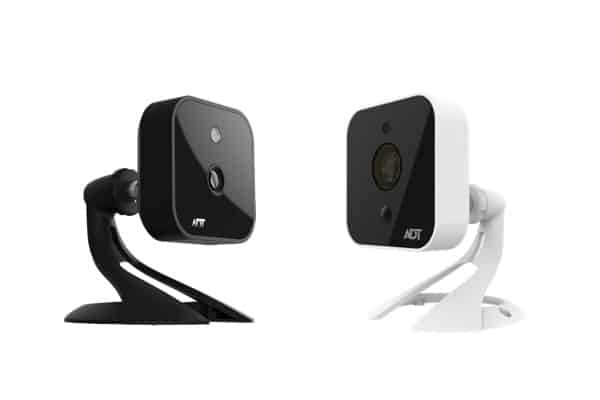
ADT Indoor Camera (left) and Outdoor Camera (right)
Pricing: What to Expect with ADT and DIY Systems
ADT packages start at $30 per month and can go up to $55 depending on your plan. The startup cost for each of their packages is $125, and ADT also charges up-front installation fees ranging from $99 to $199.
Did You Know? If you opt to purchase DIY security systems, you can save plenty of money. In contrast, traditional security companies, like ADT, charge fees for installation and professional monitoring services.
For an extra cost of $7 per month, you can purchase ADT's Extended Limited Warranty/Quality Service Plan (QSP). If your equipment is not working as it should, the warranty will prevent you from paying for repair or replacement costs.
As you might expect, a DIY setup will offer more flexibility when it comes to cost. You’ll be able to pay for the cost of the equipment up front, which usually costs between $100 and $500. You can also choose to pay for 24/7 monitoring costs starting at $10 to $50 per month, or skip the monthly fees altogether. That latter option is why DIY systems are popular among folks who would rather not have on-going monthly bills.
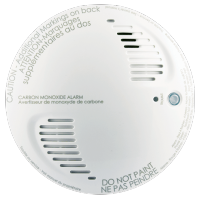
ADT Carbon Monoxide Detector
Equipment Offerings
As “techies,” we love our toys and were excited to see the number of features and state-of-the-art equipment that ADT had to offer. Indoor and outdoor cameras are on hand, along with a variety of sensors, medical alert pendants, keychain remotes, and more.
DIY systems also have many different equipment options (cameras, sensors, video doorbells, you name it), and you’ll have the freedom to pick and choose to your heart’s content, ensuring you find that perfect fit for you and your family.
Pro Tip: Be sure that you use outdoor cameras in outdoor locations. It might seem like a no-brainer, but many people don’t realize that all security cameras are not necessarily adequate for outdoor use. If you intend to use a camera outdoors, you should make sure to buy an outdoor camera suited for the job. Here’s our roundup of the best outdoor security cameras available.
Making the Best Decision
Hopefully, we’ve helped you better understand what to expect with both ADT and DIY systems. But, if you’re still having trouble deciding on which route to take, make a list of your expectations. Do you need professional installation? Are you looking for specific features? Do you value quick and easy setup? Next, you might want to compare home security systems to find a package you’re most interested in. You’ll likely see that one “ticks more boxes” than the other.
You should also factor in your budget. How much can you afford each month? How much can you afford up front? Considering these types of questions will help you get a clearer idea of which type of system you can afford (without breaking the bank).




